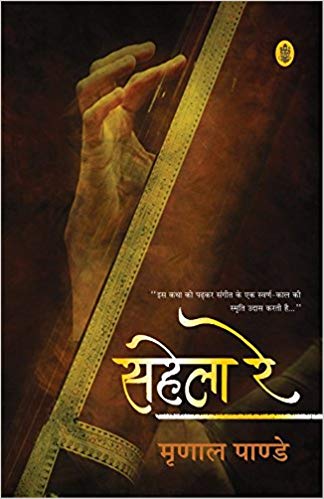There is a relentless quest to retrieve and recreate the past by dwelling on authentic tales from history and society. The recovery of lost tradition and the emphasis on a need for female tradition in literature has been widely acknowledged. Sahela Re by Mrinal Pande is a novel that traces the tradition of women’s voices in classical Indian music. Mrinal Pande is a bi-lingual writer and was born in Tikamgarh, Madhya Pradesh. Interest in music, art, and literature in its manifold aspects is distinctly visible in her oeuvre. As a journalist she has been associated with leading Hindi magazines like the Saaptahik Hindustaan, Nandan, Kadambini, Vama and several others.
A novelist, short story writer, playwright, translator and a critic, Mrinal Pande is a prominent name in Hindi literature. Sahela Re is her tribute to the world of classical Indian music. The novel brings to life the world of Hirabai and her daughter Anjalina. Hira bai is a beauty from Kumaon. Edward Hewett, an Englishman, falls for her charm and makes her his wife. After his mysterious death in an accident she is compelled to leave her life of leisure and seek shelter in Varanasi. Her daughter Victoria Masih is given a new identity as Anjalina Bai and both become well known singers. Written in the form of an epistolary novel, the story is gradually unfolded through a series of letters that are exchanged between a sensitive academic Vidya, Radha and her brother Sanjeev. Several letters are also exchanged between singers and courtesans who not only mastered the craft of music but were also custodians of culture. Indian classical music had a golden period and is now in a state of impasse. Mrinal Pande looks back at this period with a deep sense of nostalgia and regret.
The beauty of the text lies in its experiment with language at various levels. The local dialect blends with chaste Urdu and colloquial Avadhi with contemporary Hindi. The dialogues capture the subtlety of the bygone era and Pande deftly handles the aesthetic elements of the story which is interspersed with songs of suffering and separation, colours of Holi and celebration. Pande’s love for music and culture lies at the heart of this story. The novel focuses on the plight of women who belong to the marginalized sections of the society. Dancing girls, tawaifs, singers who graced many occasions in the palatial mansions of the rich and noble are women who suffered endlessly at the hands of patriarchy.

